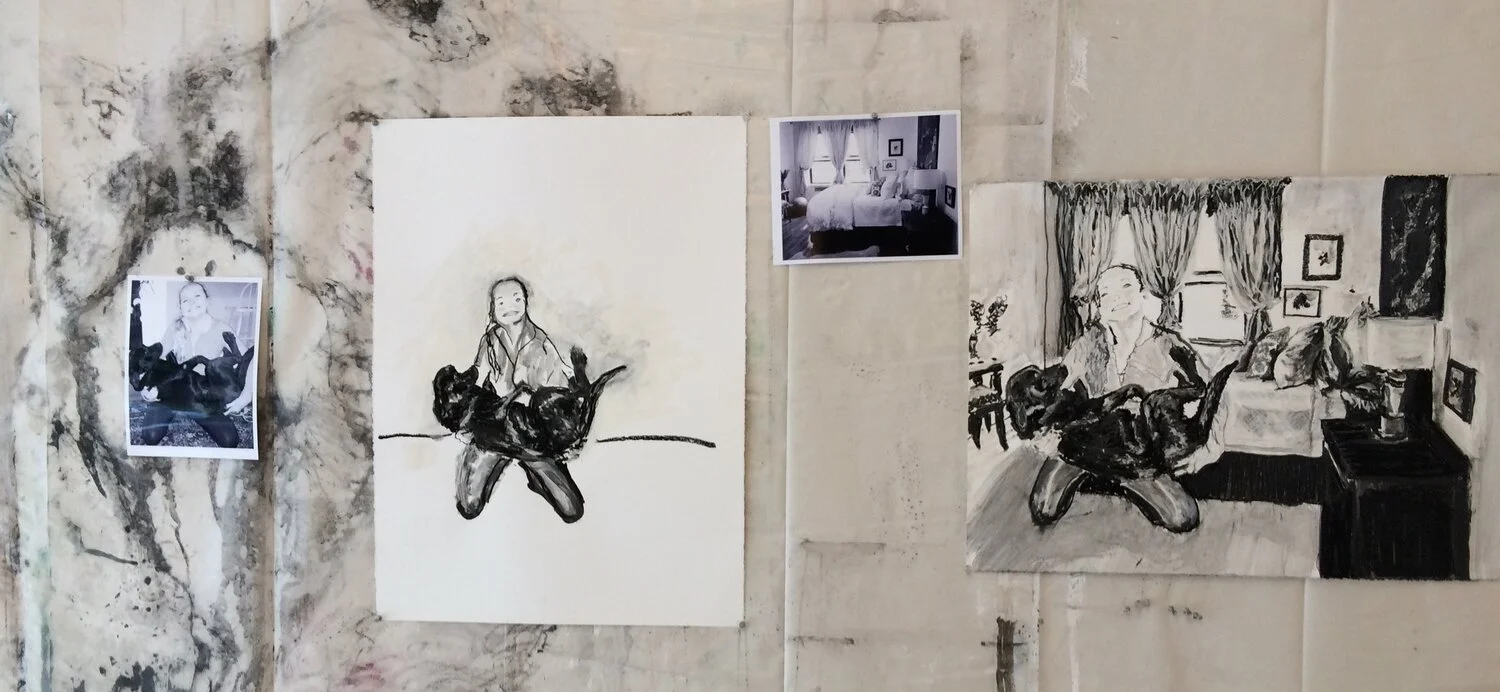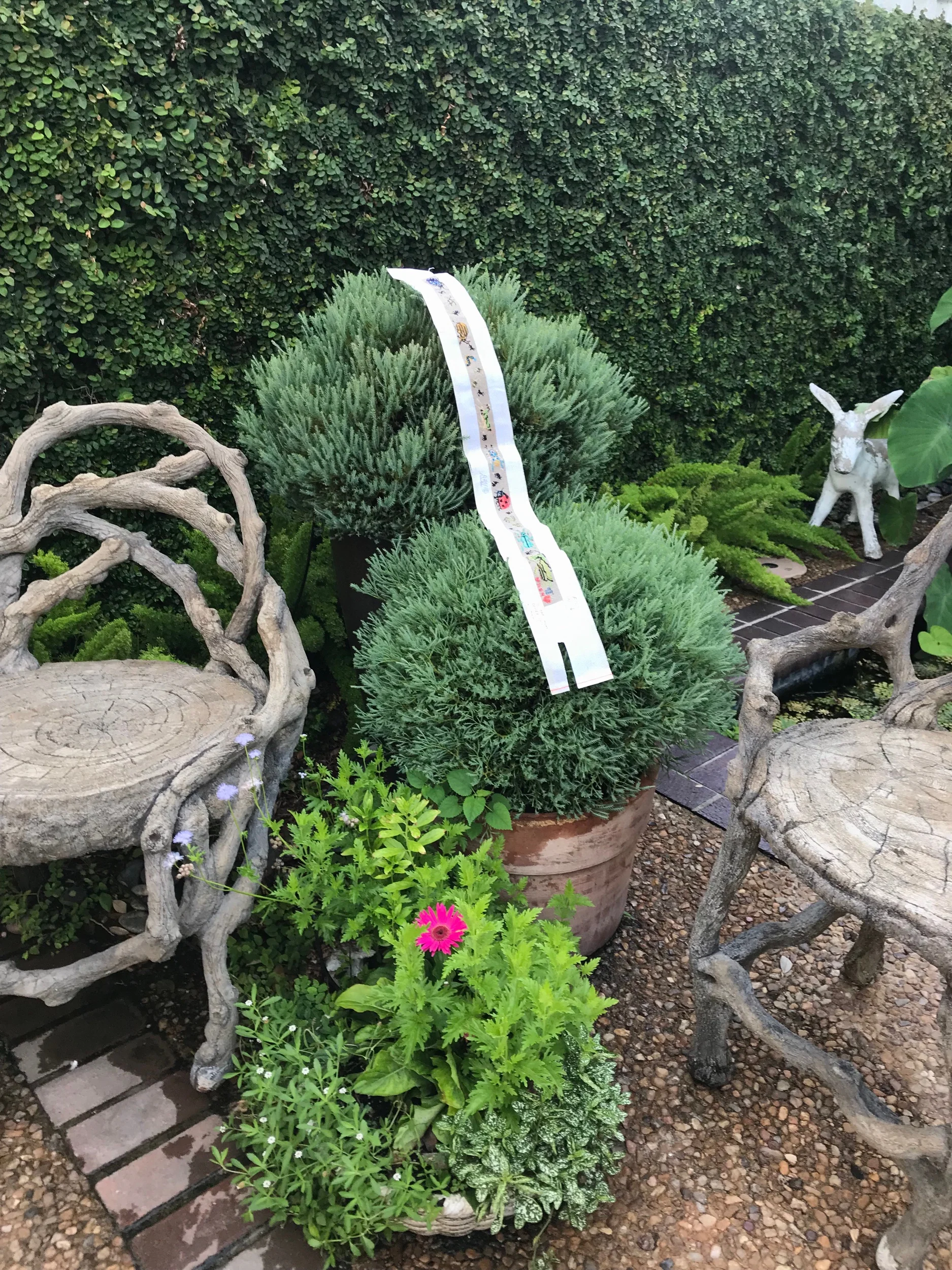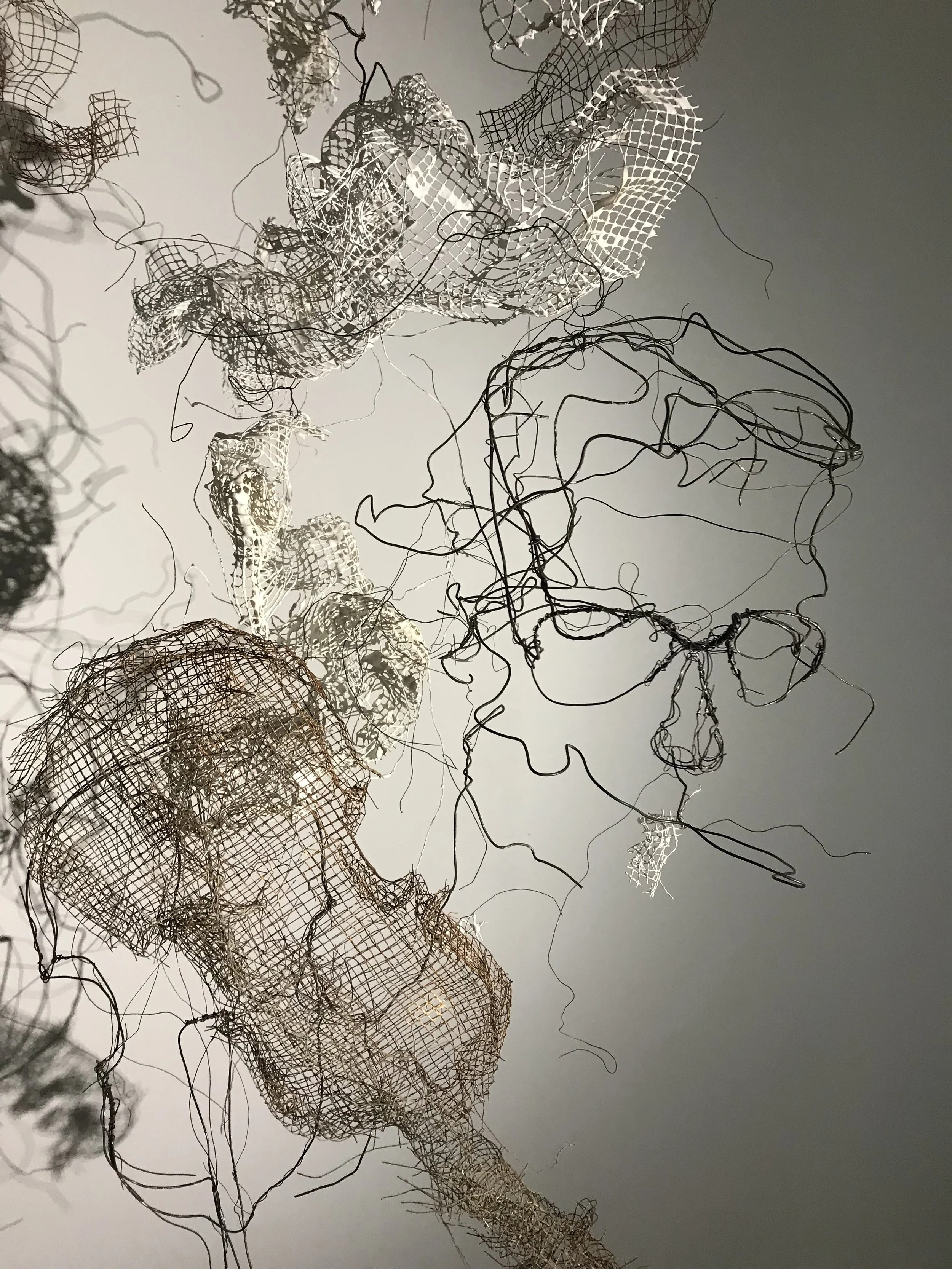I first stitched bugs in 98”.
I am spending my days making an environmental installation. For the installation I work in the dark with an Led Light making shadows. I am bending, twisting and stitching wire into wild bees. I first stitched bugs in 98”.
As I age I am amazed at how life circles back……….
Raising kids takes a lot of patience... waiting in carpools, doctor offices, soccer lessons... stitching was my therapy. I am not naturally patient. I don’t have the patience for a microwave. Stitching Kept me a sane happy mom. I took my stitching everywhere. In '98 I stitched this simple piece to be made into a bug belt for my daughter Sage Marie, whom I affectionately called sage Marie Bumblebee. I think 'bumblebee' was printed on her soccer jersey. I have no idea why I never finished the bug belt (but I think it must be because I moved twice in '98). It all works out - with just a few more inches added to save the '♥️mom '98'.
She can wear it for ever. It is funny how life circles back!
Back to my hive.
Something is crawling on the Mr. bowling ball plants.
Details on ‘98 unfinished bug belt.













































































































